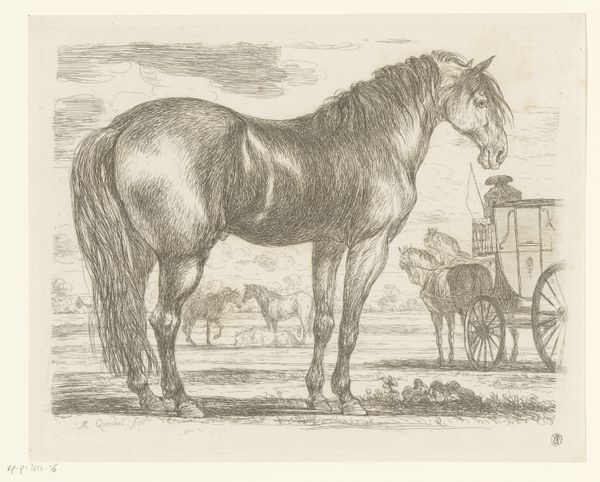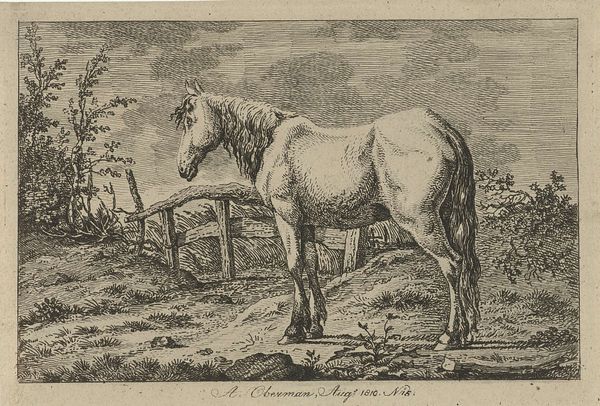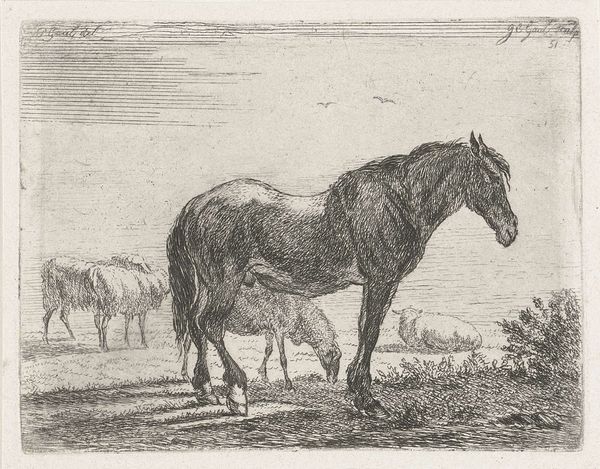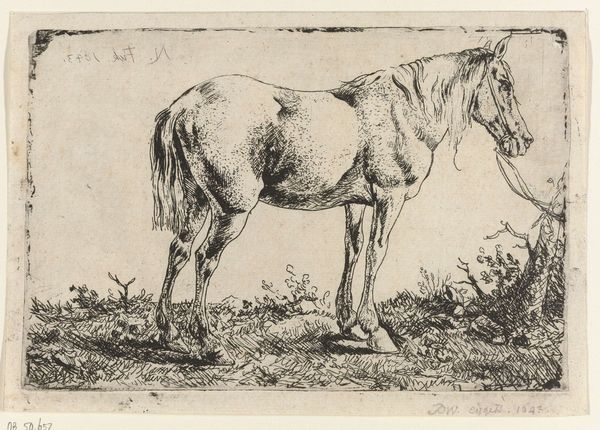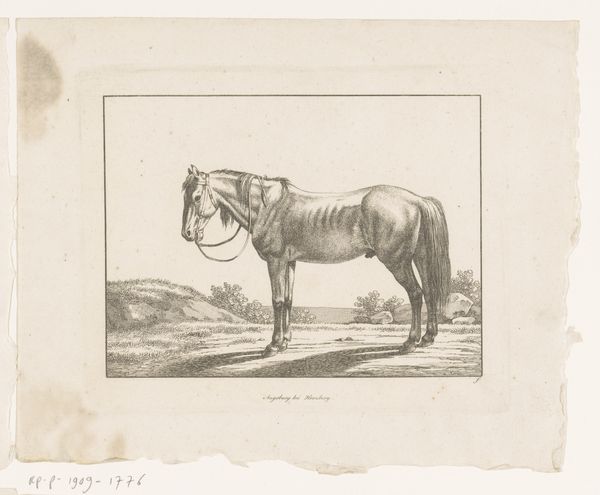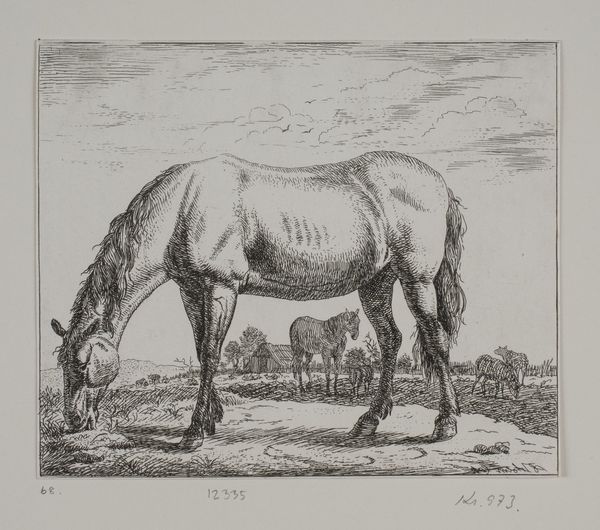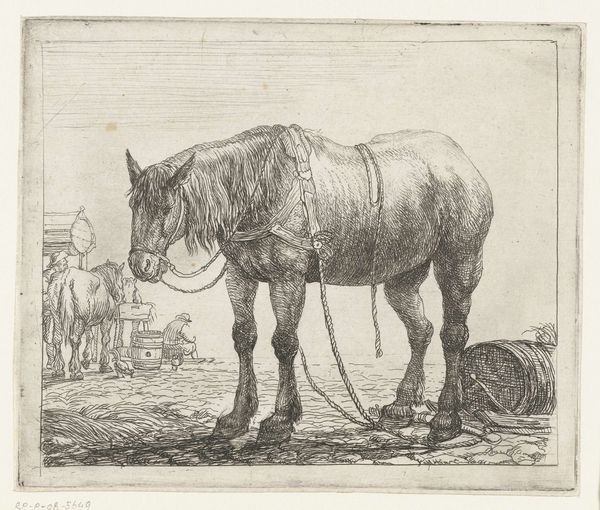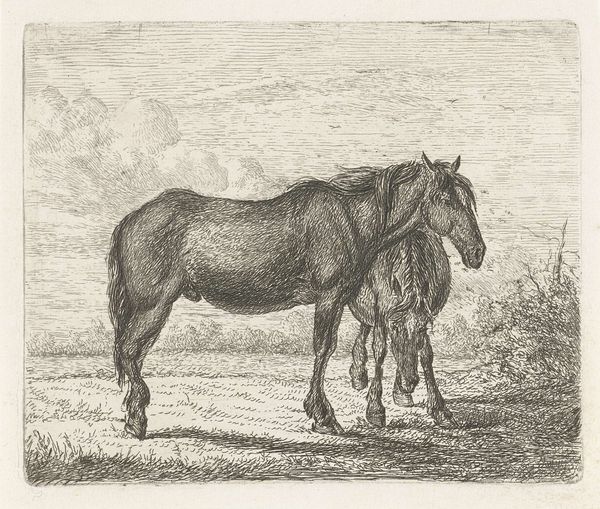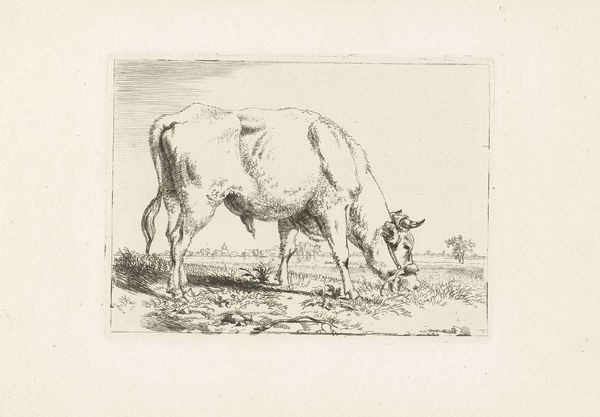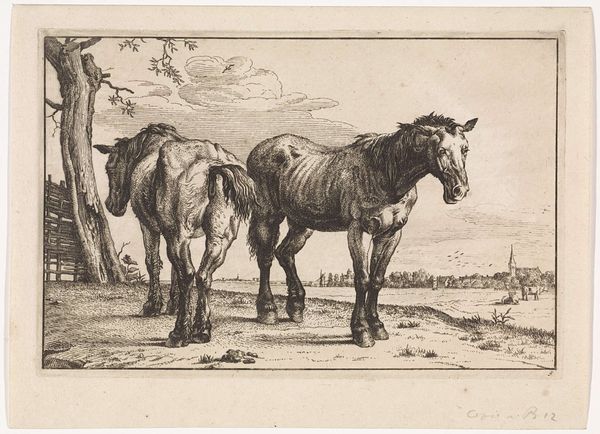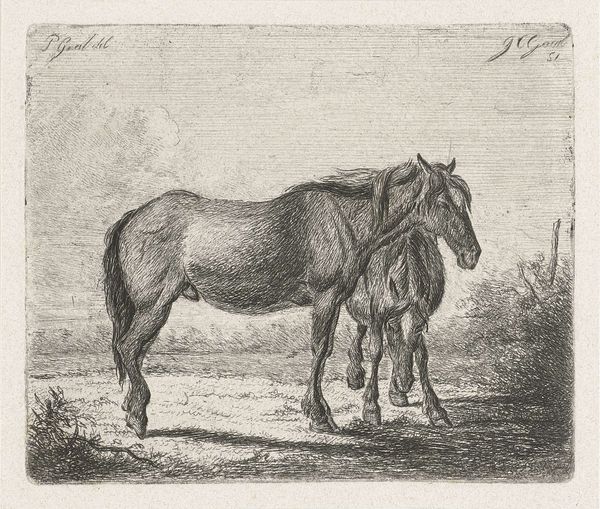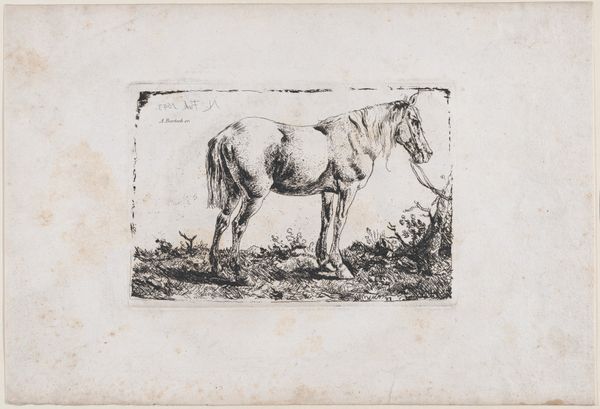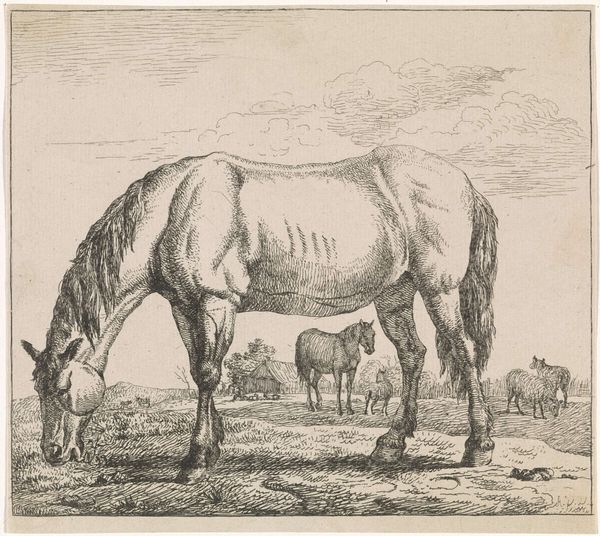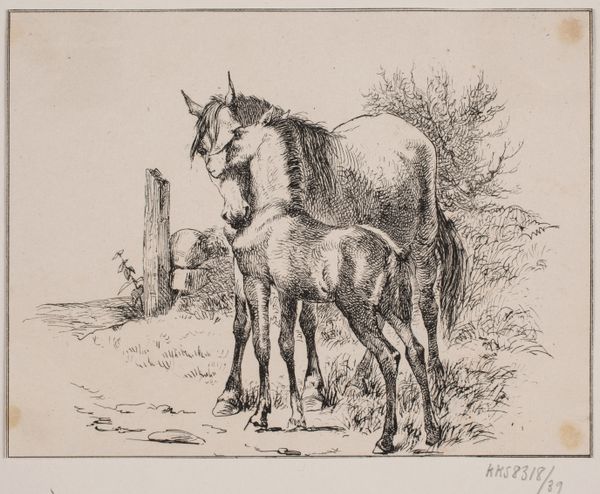
drawing, engraving
#
pencil drawn
#
drawing
#
animal
#
pencil sketch
#
landscape
#
charcoal drawing
#
pencil drawing
#
pen-ink sketch
#
engraving
#
realism
Dimensions: height 154 mm, width 200 mm
Copyright: Rijks Museum: Open Domain
Gerard van Nijmegen etched this print, titled "Horse by a Bucket," capturing a rural scene imbued with symbolic weight. Here, the horse stands as a potent emblem. Historically, horses signified status, power, and virility. From the steeds of Greek gods to the warhorses of medieval knights, their image resonates deeply within our collective consciousness. Observe how the horse is tethered; a symbol of man's dominion over nature, yet also hinting at restraint. Consider the humble bucket beside it, a mundane object elevated to significance through its contrast with the majestic animal. This evokes themes of sustenance and dependence. The horse and bucket motif has traversed time and cultures, reappearing in various guises. Think of ancient pastoral scenes or even modern equestrian art. This image is more than a simple depiction; it is a vessel carrying cultural memory. It stirs primal emotions and subconscious associations tied to our complex relationship with nature and domestication. These symbols, though seemingly simple, engage us on a deeply subconscious level. The cyclical recurrence of such symbols reveals the non-linear progression of cultural motifs. They resurface, evolve, and gather new layers of meaning. The horse, once a symbol of untamed power, now stands patiently by its bucket, illustrating the ever-shifting tapestry of cultural symbolism.
Comments
No comments
Be the first to comment and join the conversation on the ultimate creative platform.
